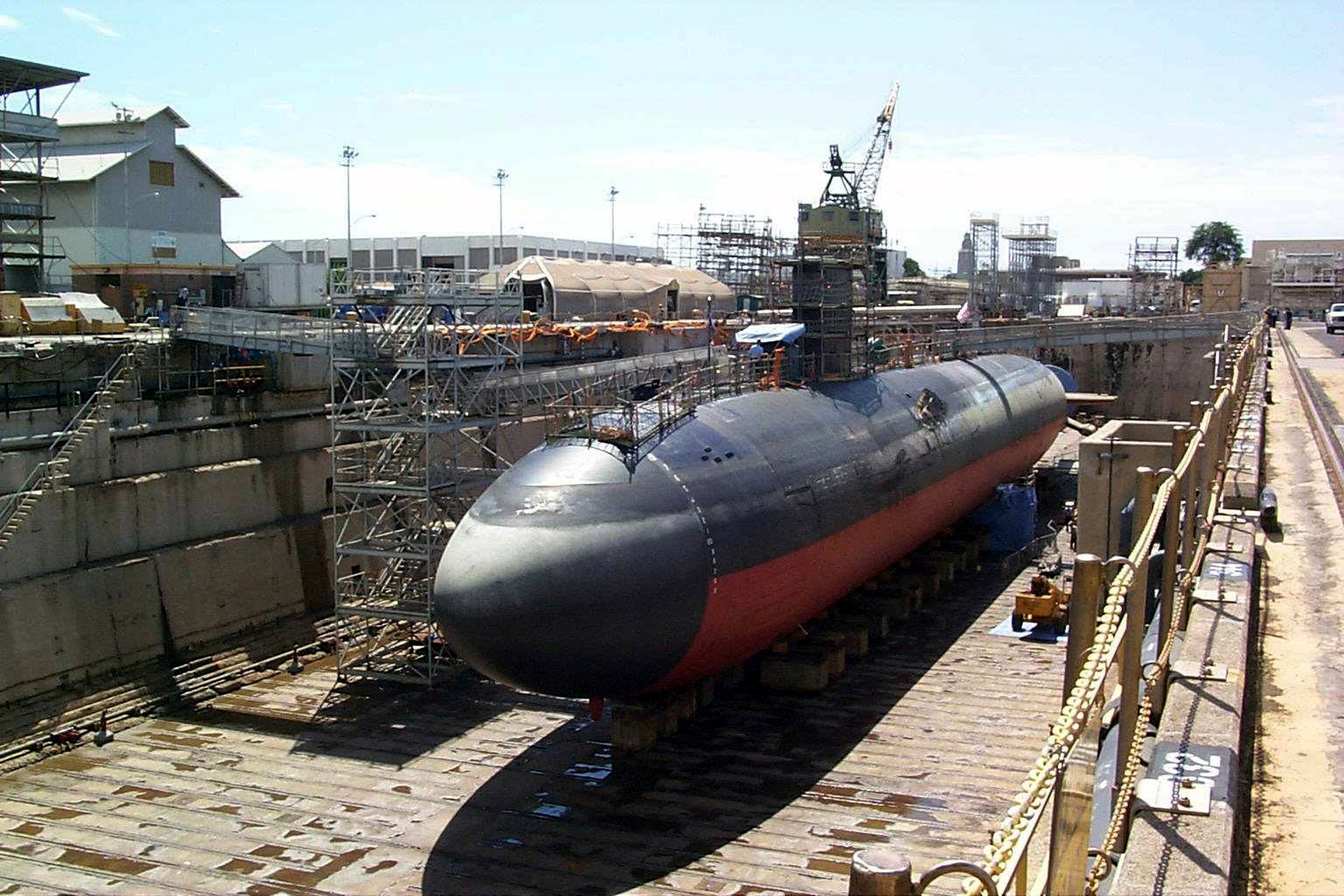
CAPITOL HILL – Two attack submarines sent to private shipyards for routine maintenance availabilities are running a few months behind schedule. But the Navy hopes that using these new-construction yards for sub-maintenance on a regular basis will help them become reliable providers of on-time maintenance.
Attack submarines faced massive backlogs at the Navy’s four public shipyards, which prioritize ballistic-missile submarines and aircraft carriers above the SSNs. After several high-profile examples of SSNs sitting pierside for months and years while awaiting space at the yards to open up, the Navy opted to send USS Montpelier (SSN-765) to General Dynamics Electric Boat and USS Helena (SSN-725), USS Columbus (SSN-762) and USS Boise (SSN-764) to Huntington Ingalls’ Newport News Shipbuilding.
“The skill set required to do maintenance is different than it is for new construction, so when you give them repair work after they haven’t had repair work in a while, and you expect them to immediate perform like a Swiss watch, you find they’re challenged to do that. EB’s been challenged with Montpelier, we’re going to be late there, and Newport News is being challenged on Helena, we’re going to be a little late there,” Naval Sea Systems Command Commander Vice Adm. Tom Moore said today at a House Armed Services readiness subcommittee hearing.
“Some of that’s because we haven’t built that proficiency up, and so the Navy’s having discussions that maybe it would be in our best interest to, on a regular basis, keep some submarine repair work in the private sector not only as a relief valve for the public yards as we level-load them, but also to establish that proficiency level so that when we do get ourselves into a crisis we’ve got a partner over there that’s performed that work on a regular basis that can do that going forward.”
Moore told USNI News after the hearing that Montpelier and Helena were set to undergo six-month maintenance availabilities, and both are running a few months behind. However, he noted that Newport News’ second sub to repair, Columbus, is running on time right now.
Asked if there was a particular type of work or portion of the maintenance that was causing the delays, Moore said, “it’s not a particular trade, I just think it’s a proficiency issue. There’s a significant difference between submarine construction and submarine repair, so yards don’t have that proficiency. Newport News, they have an opportunity here because they got three submarines, so they’re going to finish with Helena and then they’re going to go on to Columbus, which is on time, and then they’re going to get Boise. So I think you’ll see, like anything else, the proficiency will get better. … We probably ought to consider looking at more opportunity to, on a regular basis, give some opportunity to do [repair work] too to keep the proficiency up.”
Moore said during the hearing that NAVSEA was looking at the submarine and aircraft carrier maintenance workloads for Fiscal Years 2020 and 2021 right now, both at the public yards and at Electric Boat and Newport News. Moore told USNI News in a December 2017 interview that the private yards would be taking on more repair work, and he told the lawmakers today that a decision would be made soon regarding the specifics of to accomplish that. Moore said after the hearing that he’s working those details with Navy leadership now and expects a decision within the next six months.
Referencing the more than two years Boise spent just sitting at a pier before the Navy finally decided to send it to a private yard for its availability, Moore told the lawmakers, “I think we learned a pretty hard lesson on Boise, which was we waited too late in the game to make that decision. … We need to look two to three years or more out, because I have a pretty good sense of what workload I need and what I have in the public shipyards, and where I have workload peaks, instead of waiting until the last second to see if we can hang on to the work ourselves, I think it makes sense for us to go ahead and let’s provide ourselves some additional capacity by putting the work in the private sector.”





